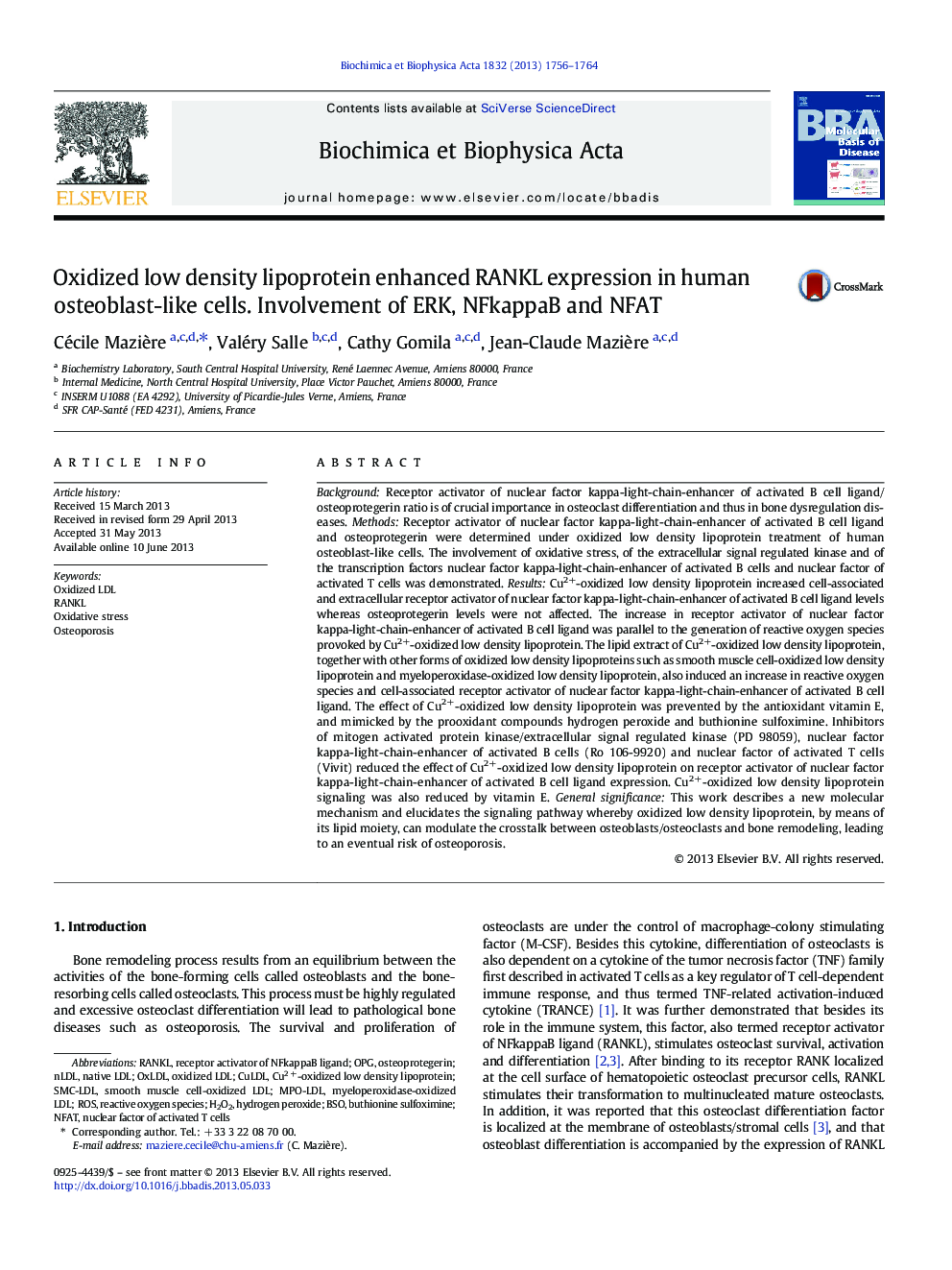| Article ID | Journal | Published Year | Pages | File Type |
|---|---|---|---|---|
| 1904804 | Biochimica et Biophysica Acta (BBA) - Molecular Basis of Disease | 2013 | 9 Pages |
•CuLDL increased cell-associated and extracellular RANKL levels in human osteoblast-like cells.•SMC-LDL and MPO-LDL also induced an increase in cell-associated RANKL.•The effect of CuLDL was mimicked by the prooxidant compounds H2O2 and BSO.•The increase in RANKL was parallel to the generation of ROS.•The involvement of MEK/ERK, NFkappaB and NFAT was demonstrated.
BackgroundReceptor activator of nuclear factor kappa-light-chain-enhancer of activated B cell ligand/osteoprotegerin ratio is of crucial importance in osteoclast differentiation and thus in bone dysregulation diseases.MethodsReceptor activator of nuclear factor kappa-light-chain-enhancer of activated B cell ligand and osteoprotegerin were determined under oxidized low density lipoprotein treatment of human osteoblast-like cells. The involvement of oxidative stress, of the extracellular signal regulated kinase and of the transcription factors nuclear factor kappa-light-chain-enhancer of activated B cells and nuclear factor of activated T cells was demonstrated.ResultsCu2+-oxidized low density lipoprotein increased cell-associated and extracellular receptor activator of nuclear factor kappa-light-chain-enhancer of activated B cell ligand levels whereas osteoprotegerin levels were not affected. The increase in receptor activator of nuclear factor kappa-light-chain-enhancer of activated B cell ligand was parallel to the generation of reactive oxygen species provoked by Cu2+-oxidized low density lipoprotein. The lipid extract of Cu2+-oxidized low density lipoprotein, together with other forms of oxidized low density lipoproteins such as smooth muscle cell-oxidized low density lipoprotein and myeloperoxidase-oxidized low density lipoprotein, also induced an increase in reactive oxygen species and cell-associated receptor activator of nuclear factor kappa-light-chain-enhancer of activated B cell ligand. The effect of Cu2+-oxidized low density lipoprotein was prevented by the antioxidant vitamin E, and mimicked by the prooxidant compounds hydrogen peroxide and buthionine sulfoximine. Inhibitors of mitogen activated protein kinase/extracellular signal regulated kinase (PD 98059), nuclear factor kappa-light-chain-enhancer of activated B cells (Ro 106-9920) and nuclear factor of activated T cells (Vivit) reduced the effect of Cu2+-oxidized low density lipoprotein on receptor activator of nuclear factor kappa-light-chain-enhancer of activated B cell ligand expression. Cu2+-oxidized low density lipoprotein signaling was also reduced by vitamin E.General significanceThis work describes a new molecular mechanism and elucidates the signaling pathway whereby oxidized low density lipoprotein, by means of its lipid moiety, can modulate the crosstalk between osteoblasts/osteoclasts and bone remodeling, leading to an eventual risk of osteoporosis.
